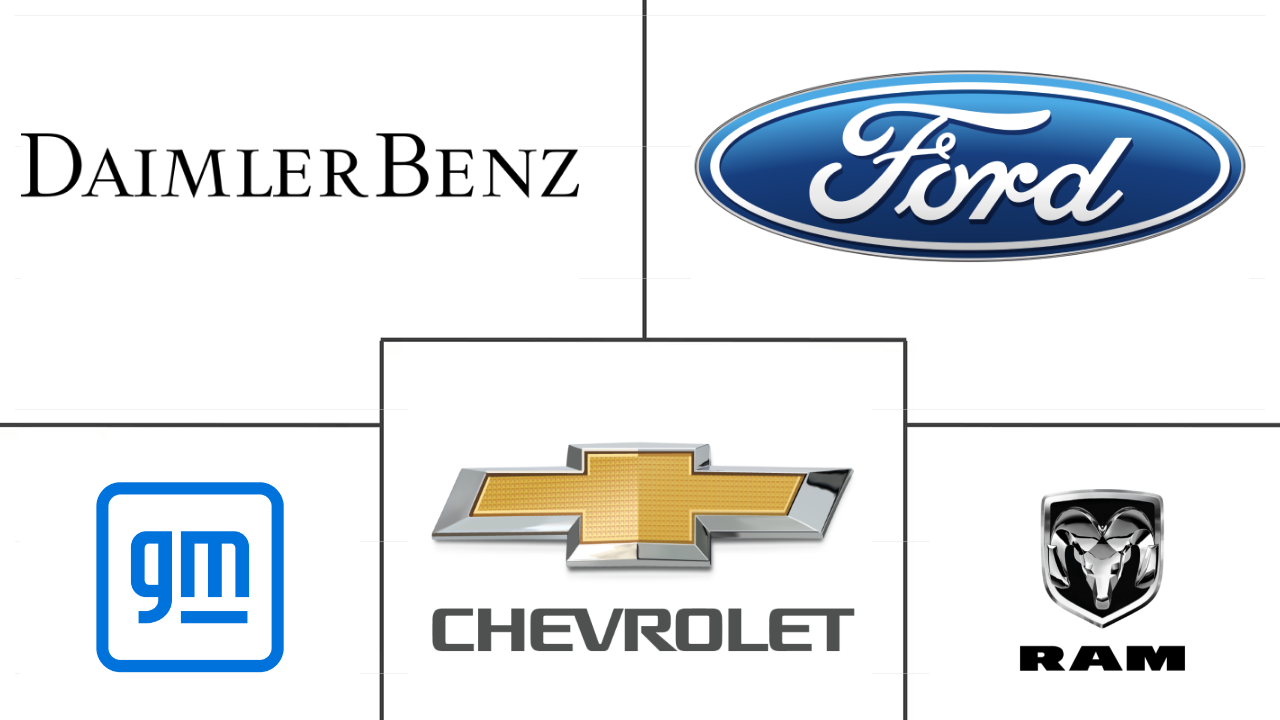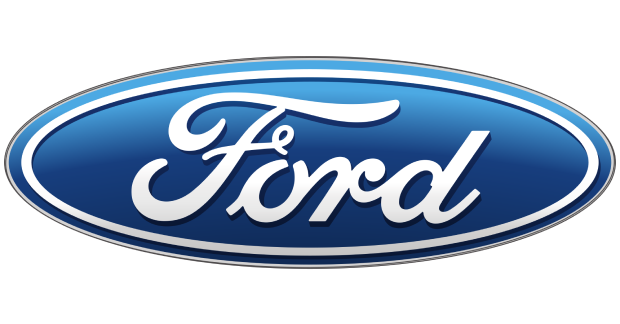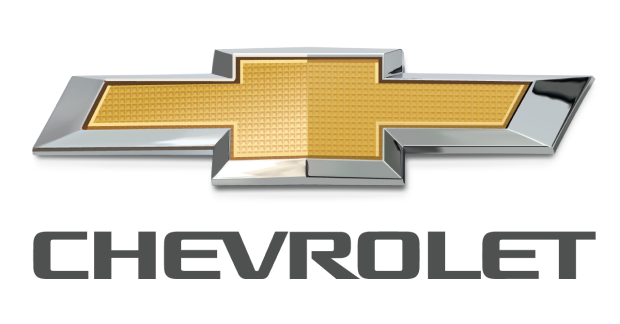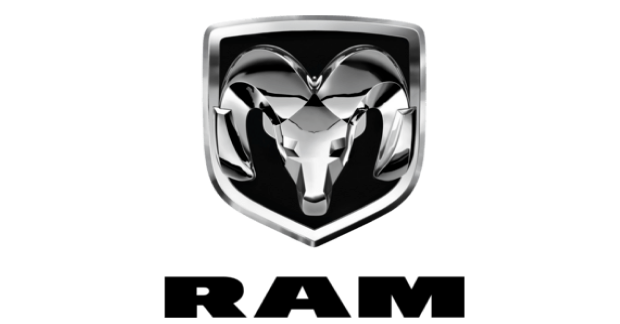Market Size of united states vans Industry
|
|
Study Period | 2017 - 2030 |
|
|
Market Size (2024) | USD 11.4 Billion |
|
|
Market Size (2030) | USD 15.65 Billion |
|
|
Largest Share by Propulsion Type | ICE |
|
|
CAGR (2024 - 2030) | 5.43 % |
|
|
Fastest Growing by Propulsion Type | Hybrid and Electric Vehicles |
Major Players |
||

|
||
|
*Disclaimer: Major Players sorted in no particular order |
United States Vans Market Analysis
The United States Vans Market size is estimated at 11.4 billion USD in 2024, and is expected to reach 15.65 billion USD by 2030, growing at a CAGR of 5.43% during the forecast period (2024-2030).
11.4 Billion
Market Size in 2024 (USD)
15.65 Billion
Market Size in 2030 (USD)
-1.26 %
CAGR (2017-2023)
5.43 %
CAGR (2024-2030)
Largest Segment by Fuel Category
53.90 %
value share, Diesel, 2023
Diesel vans are the largest segment in the US due to their efficiency in long-distance travel, higher payload capacity, and cost-effectiveness for businesses requiring durable and powerful vehicles.
Fastest-growing Segment by Fuel Category
36.35 %
Projected CAGR, BEV, 2024-2030
BEVs are rapidly growing in the US due to increasing consumer demand for eco-friendly alternatives, enhanced government subsidies, and the development of comprehensive charging networks.
Leading Market Player
42.87 %
market share, Ford Motor Company, 2023

Numerous vans (models) for various uses, such as freight, crew, passengers, etc. are produced domestically, and easily available after-sales services make Ford a market leader in the US van market.
Second leading Market Player
15.90 %
market share, GM Motor (Chevrolet), 2023

Chevrolet offers a wide product portfolio over other brands along with good after-sales services. Moreover, its major presence in the US adds to its business growth globally.
Third Leading Market Player
9.77 %
market share, Ram Trucking, Inc., Inc.

Ram Trucking, Inc. ranks high in the market due to its reliable and versatile vans, strong brand loyalty, and extensive distribution network supporting a wide range of commercial applications.
US light commercial van market grew from 410,000 units in 2017 to 330,000 in 2022, with a rebound to 346,949 units expected by 2024
- In 2022, the sales of light commercial vans in the United States dipped to 330,000 units, continuing the downward trend from the 2021 figure of 340,000 units. This decline, observed over the past few years, reflects shifting dynamics in business logistics and urban planning, resulting in reduced demand for these vehicles, particularly in densely populated areas. However, the market appears to be stabilizing. Projections for 2023 indicated sales of around 332,665 units. A rebound is anticipated in 2024, with sales forecasted to reach approximately 346,949 units, signaling a potential resurgence in demand for light commercial vans.
- Back in 2017, the US light commercial van market boasted a robust figure of 410,000 units. Sales remained relatively steady until 2019, but a notable decline set in from 2020. The initial stability can be attributed to sectors heavily reliant on these vans for their transportation and logistics needs. However, the subsequent drop aligns with the challenges posed by urban congestion and evolving business models, favoring more compact and efficient transport solutions.
- Looking beyond 2024, the US light commercial van market is poised for a gradual recovery. Sales volumes are projected to exhibit slight fluctuations but maintain an upward trajectory, culminating in an estimated 380,500 units by 2030. Factors such as advancements in vehicle design, a growing appetite for door-to-door delivery services, and the evolution of urban infrastructure are expected to fuel this growth.
United States Vans Industry Segmentation
Hybrid and Electric Vehicles, ICE are covered as segments by Propulsion Type.
- In 2022, the sales of light commercial vans in the United States dipped to 330,000 units, continuing the downward trend from the 2021 figure of 340,000 units. This decline, observed over the past few years, reflects shifting dynamics in business logistics and urban planning, resulting in reduced demand for these vehicles, particularly in densely populated areas. However, the market appears to be stabilizing. Projections for 2023 indicated sales of around 332,665 units. A rebound is anticipated in 2024, with sales forecasted to reach approximately 346,949 units, signaling a potential resurgence in demand for light commercial vans.
- Back in 2017, the US light commercial van market boasted a robust figure of 410,000 units. Sales remained relatively steady until 2019, but a notable decline set in from 2020. The initial stability can be attributed to sectors heavily reliant on these vans for their transportation and logistics needs. However, the subsequent drop aligns with the challenges posed by urban congestion and evolving business models, favoring more compact and efficient transport solutions.
- Looking beyond 2024, the US light commercial van market is poised for a gradual recovery. Sales volumes are projected to exhibit slight fluctuations but maintain an upward trajectory, culminating in an estimated 380,500 units by 2030. Factors such as advancements in vehicle design, a growing appetite for door-to-door delivery services, and the evolution of urban infrastructure are expected to fuel this growth.
| Propulsion Type | ||||||
| ||||||
|
United States Vans Market Size Summary
The United States Vans Market is experiencing a period of transformation, driven by evolving business logistics and urban planning trends. Despite a recent decline in sales, the market is showing signs of stabilization and potential recovery. The demand for light commercial vans, which had been affected by urban congestion and a shift towards more compact transport solutions, is expected to rebound. This resurgence is anticipated due to advancements in vehicle design, the growing need for door-to-door delivery services, and the evolution of urban infrastructure. The market is also witnessing a significant shift towards electric vehicles, spurred by increased environmental awareness and government regulations aimed at reducing carbon emissions.
The adoption of electric commercial vehicles is on the rise, fueled by the booming e-commerce industry and governmental initiatives promoting cleaner transportation. Notable regulations, such as California's Zero-Emission Vehicle program and New York's Advanced Clean Truck Rule, are setting ambitious targets for zero-emission vehicles. These efforts, alongside federal plans to boost domestic battery manufacturing, are expected to significantly enhance electric mobility in the United States. The market is fairly consolidated, with major players like Daimler AG, Ford Motor Company, General Motors Company, GM Motor, and Ram Trucking Inc. leading the charge. Recent developments, such as Ford's flexible electric solutions for Uber drivers and Stellantis's expansion of Ram ProMaster EV units, highlight the industry's commitment to innovation and sustainability.
United States Vans Market Size - Table of Contents
-
1. MARKET SEGMENTATION (includes market size in Value in USD and Volume, Forecasts up to 2030 and analysis of growth prospects)
-
1.1 Propulsion Type
-
1.1.1 Hybrid and Electric Vehicles
-
1.1.1.1 By Fuel Category
-
1.1.1.1.1 BEV
-
1.1.1.1.2 HEV
-
-
-
1.1.2 ICE
-
1.1.2.1 By Fuel Category
-
1.1.2.1.1 Diesel
-
1.1.2.1.2 Gasoline
-
-
-
-
United States Vans Market Size FAQs
How big is the United States Vans Market?
The United States Vans Market size is expected to reach USD 11.40 billion in 2024 and grow at a CAGR of 5.43% to reach USD 15.65 billion by 2030.
What is the current United States Vans Market size?
In 2024, the United States Vans Market size is expected to reach USD 11.40 billion.

